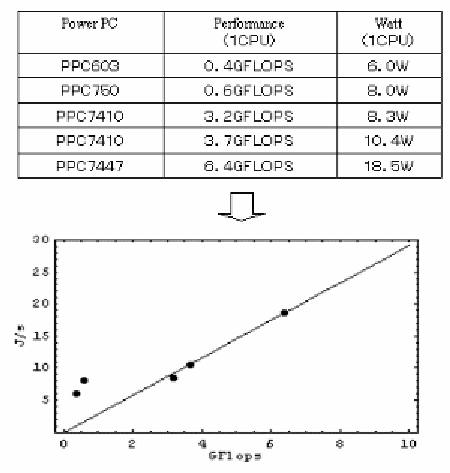Information Technology Reference
In-Depth Information
assumptions should be amended. Subsequently to it, Hameroff and Tuszynski [2004]
published a paper that microtuble subunit tublins underwent coherent excitations, which led
to the automatic sequence, where quantum coherence superposition was emerged in certain
tublins and consciousness was occurred in the brain. But the need to maintain macroscopic
quantum cohererence in a warm wet brain is certainly a serious problem for the Penrose-
Hameroff model.
H
IGH
P
ERFORMANCE
C
OMPUTATION IN THE
B
RAIN
U
TILIZING
T
UNNELING
P
HOTONS
Contrary to researches mentioned above, we postulate that the human brain is a quantum
computer system operated by superluminal evanescent photons.
Figure 8 shows the table of processing speed per CPU of the PowerPC. From which, the
ratio of energy loss
/
processing speed can be roughly estimated as
2
J/s/G-Flops.
Figure 8. Performance of the Power PC.
16
2 ×
operations/sec,
the energy of which required for computation by the Power PC can be estimated as
10
Supposing that the computational speed of the human brain is
7
5 ×
10
J/s from Figure 8. As human brains consume the energy
500
kcal
per day (=
24
.
J
/
s
)
, the
−
7
=
R
, which is
similar to the calculation result obtained for QTP gates from Eq.(17). Hence it is seen that the
human brain consumes the energy much less than the conventional silicon processors as
shown in Figure 3, and it is considered that the human brain is an efficient computational
system utilizing superluminal evanescent photons.
4
×
10
energy ratio of the human brain and the silicon processor becomes


